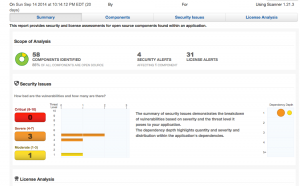A friend asked me what browser plugins I use. Rather than write an email back, I thought “well that makes a good blog post.” Aside from the plugins practically everyone has (like Java, Acrobat, etc), this page lists what I use.
Safari plugins
My main browser is Safari. I have:
| Plugin | What is is for |
|---|---|
| Live CSS Editor | Testing CSS changes without loading the page |
| Firebug Lite for Safari | JavaScript debugging |
| Unicorn | CSS validator equivalent to this page |
| W3C Validator | XHTML, CSS and RSS validator equivalent to this page (not sure where I downloaded it from) |
| No Follow | Shows which links have no follow |
| Ghostery | This is the most recent plugin that I’ve added. It shows you which third party sites have content on the page and makes it easy to customize what you allow. |
I used to use plugins for Delicious and Feedly, but replaced them with the bookmarkets
Safari plugins
I also have some Firefox plugins:
| Plugin | What is is for |
|---|---|
| Alexa Toolbar | The Alexa toolbar shows you the “popularity” of a site. This plugin “phones home” with your business so I don’t want it in my main browser. It is useful when looking at SEO though. For example, my friend owns NYC Doula Service and asked me a question about her ranking. It was convenient to have tools installed. |
| PageRank | Shows Google page rank value. I don’t know if this one phones home, but I keep it in Firefox because Alexa is there. |
| Heartbleed | Earlier this year when the Heartbleed vulnerability was new, someone wrote a plugin to check sites. This plugin was only available in Firefox. That’s why this one is in Firefox, it isn’t a plugin that I think is spying on me. |

